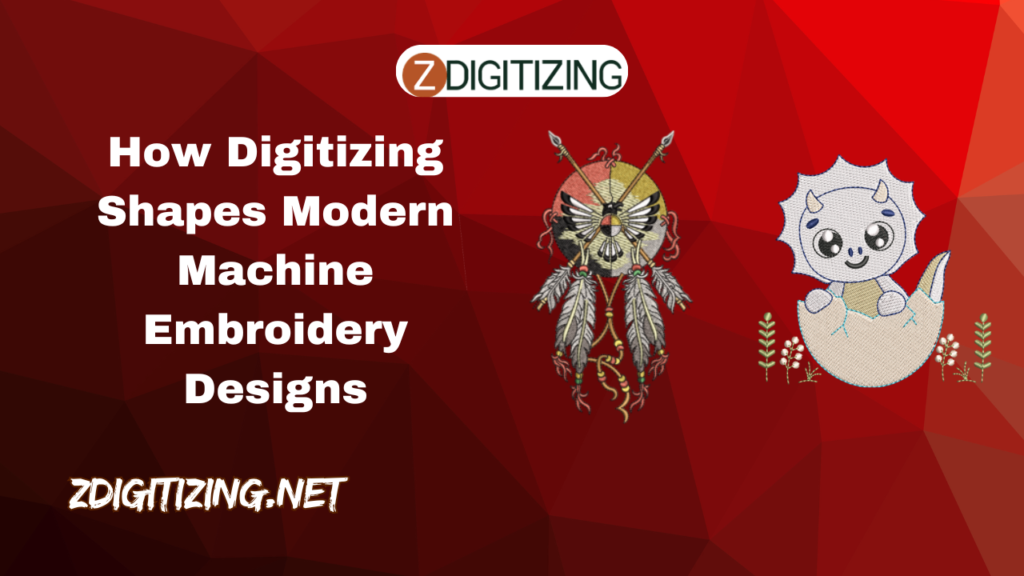At its core, machine embroidery is the art of using a digital file to guide a needle and thread into creating beautiful patterns on fabric. Yet, what truly transforms a simple logo or a piece of artwork into a stunning, stitch-perfect creation is the often-overlooked process of digitizing. It is the vital bridge between a design on a screen and a tangible, high-quality embroidered product. Digitizing is far more than an automatic file conversion; it is a meticulous blend of art and technical expertise that fundamentally shapes the appearance, durability, and stitch-out quality of all Machine Embroidery Designs.
The Art and Science of Digitizing
Digitizing is not just a push-button process. It’s a skilled craft that requires a deep understanding of how thread interacts with fabric. A professional digitizer uses specialized digitizing software to manually “draw” the stitches that will make up the final design.
The Power of Stitch Types
The final look and feel of a design depend heavily on the stitch types chosen by the digitizer. A skilled professional knows exactly when to use a fill stitch, a satin stitch, or a running stitch.
-
Fill Stitch: Used to cover large areas. A digitizer must carefully set the stitch density to ensure full coverage without making the design too stiff or causing the fabric to pucker.
-
Satin Stitch: Perfect for outlines, lettering, and narrow shapes. A satin stitch is created with a back-and-forth zigzag pattern that gives the design a smooth, satin-like sheen.
-
Running Stitch: Used for fine details, outlines, and as a traveling stitch to move the needle from one part of the design to another without leaving a jump stitch.
Mastering Technical Challenges
The real skill of digitizing lies in anticipating and counteracting the physical forces that occur during the embroidery process.
-
Pull and Push Compensation: When a thread is pulled through fabric, it causes distortion. A fill stitch can cause fabric to pull in, while a wide satin stitch can push the fabric out.
From Image to Stitch: The Digitizing Process
The process of converting a digital image into a set of instructions for an embroidery machine is a detailed, multi-step workflow that requires a professional hand.
Step 1: Analyzing the Artwork
A professional embroidery digitizer starts with a high-resolution raster image (like a JPEG) or a vector art file (SVG or AI). They analyze the image for its complexity, size, and intended fabric. This crucial first step determines the best stitch types and technical settings to use.
Step 2: Mapping the Stitches
Using advanced digitizing software, the digitizer manually traces each element of the design, assigning the correct stitch type and direction. This is where the magic happens.
Step 3: Optimizing for the Final Product
After mapping the stitches, the digitizer adjusts the stitch density, adds underlay, and applies pull compensation as needed. They also assign specific thread colors from a standard chart to ensure consistent color matching.
How Digitizing Enables Modern Embroidery Trends
The advancements in digitizing software have unlocked an incredible world of creative possibilities, allowing Machine Embroidery Designs to go beyond simple, flat patterns. Complex, textured, and three-dimensional techniques are now easily accessible thanks to skilled digitizers.
The Art of Appliqué
Digitizing for appliqué involves creating a series of well-defined steps for the embroidery machine. The file will include a placement stitch, a tack-down stitch, and a final satin stitch or blanket stitch to cover the raw edge of the fabric.
The Rise of 3D Puff
3D puff embroidery is a popular modern technique that gives designs a raised, dimensional look. This effect is achieved by stitching over a piece of foam. A special digitizing approach is required to create a dense, specific type of satin stitch that both secures the foam and creates the iconic puffy look.
Intricate Free-Standing Lace
Free-standing lace (FSL) is a form of embroidery that, when the stabilizer is washed away, leaves behind a delicate, thread-only creation.
Conclusion
The quality of your Machine Embroidery Designs is a direct reflection of the digitizing process that created them. It is the crucial, behind-the-scenes work that determines whether a project will be a source of frustration or a masterpiece of craftsmanship. While the process may seem technical, understanding its importance empowers you to make smarter choices for your creative endeavors. By choosing a high-quality digitizer like ZDigitizing, you are not just buying a file; you are investing in the expert knowledge and meticulous skill that will bring your creative vision to life with every perfect stitch.
Frequently Asked Questions About Digitizing
1. Is digitizing the same as converting a file?
No. File conversion is a simple change from one format to another (PES to DST, for example). Digitizing is the manual, creative process of taking a static image and mapping out every single stitch, thread color, and stitch direction to create a workable embroidery file.
2. Why can’t I just use auto-digitizing software?
Auto-digitizing software uses an algorithm to guess where stitches should go, but it lacks the human judgment to account for things like fabric type, pull compensation, and efficient stitch pathing.
3. What makes a digitized file “high-quality”?
A high-quality digitized file has smooth, even stitching, minimal jump stitches, and appropriate underlay.
4. Can I get a design digitized from a regular picture?
Yes. A professional embroidery digitizer can work with a high-resolution raster image (like a JPEG or PNG) or a vector art file. They will manually re-create the design with stitches and optimize it for embroidery. A company like ZDigitizing specializes in this kind of custom work.

